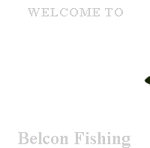Grinner
Knot -
This is a multi purpose
knot that is more securely clinched than it's
relative blood knot. It's use is attaching swivels,
lures, and hooks to the main line.
Assist its formation by pulling down to the
base

Half
Blood Knot -
One
of the easiest knots to perform is the half
blood knot. It is also one of the safest knots
to have when tying to singular hooks, swivels
and lures. If you look at the design of the
knot, you can see that if tension is applied
to the hook, the coils actually exert more pressure
on the line, preventing it from slipping off
your hook.
The knot
is tied by passing the line thru the eye of
the hook, wrapping the tag around the main line
4-6 times, then passing the tag back thru the
first loop made around the eye of the hook.
The finer the diameter of the line in relation
to the diameter of the hook eye, the greater
the number of turns (up to six) that should
be made.
If you really
want to be fussy, take a cigarette lighter and
melt the cut tip of the line (the tag) so that
a small ball of monofilament forms. If your
not careful, the heat of the lighter could degrade
the strength of the knot and line on the hook.
I usually don't worry about this. Knots these
days have been designed to cater for most situations
of fishing.

